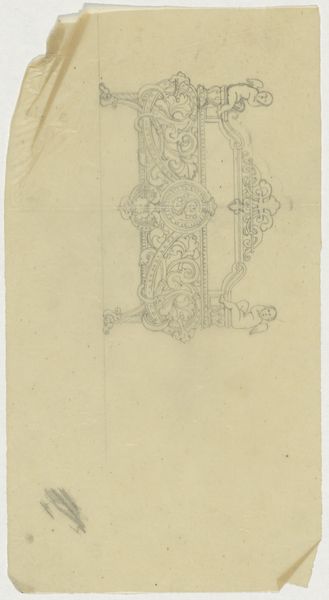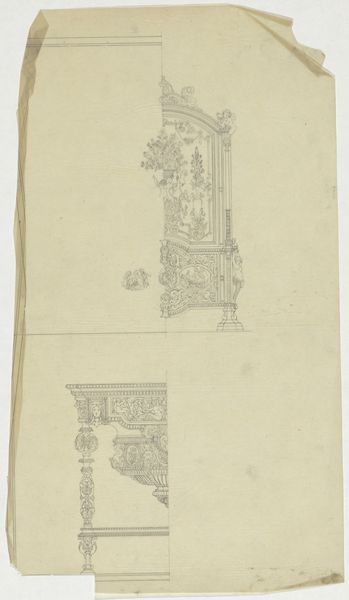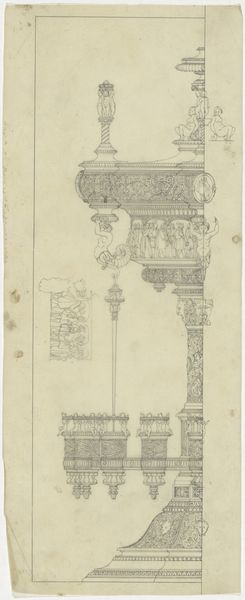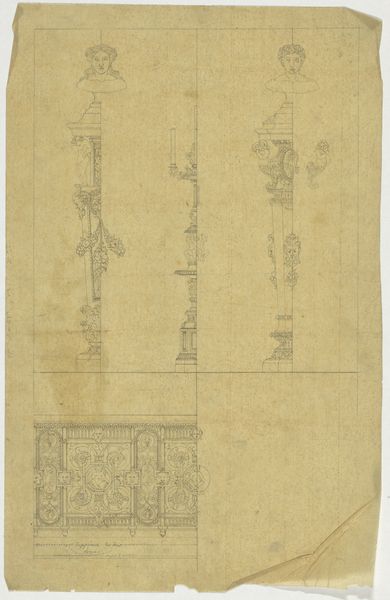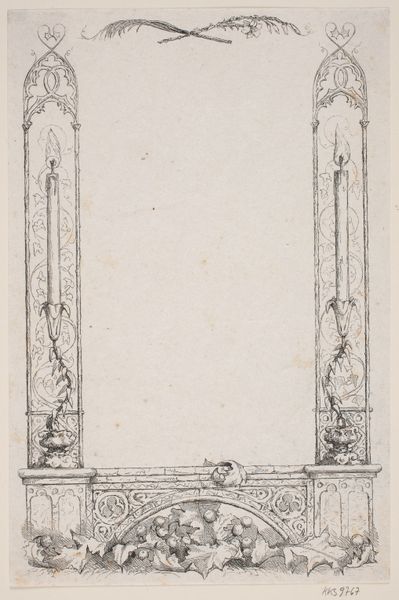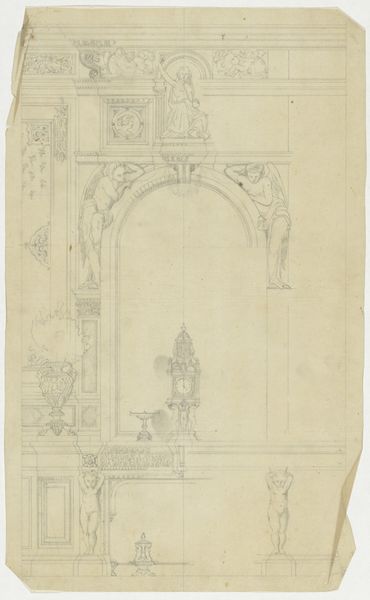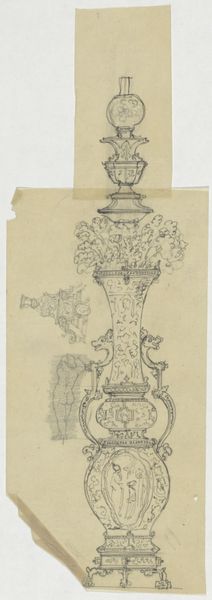
drawing, paper, pencil
#
architectural sketch
#
drawing
#
aged paper
#
quirky sketch
#
sketch book
#
paper
#
form
#
personal sketchbook
#
sketchwork
#
geometric
#
romanticism
#
pencil
#
line
#
sketchbook drawing
#
storyboard and sketchbook work
#
sketchbook art
#
initial sketch
Dimensions: height 76 mm, width 123 mm
Copyright: Rijks Museum: Open Domain
Here we see two frames rendered in pencil by Firma Feuchère. The upper frame design features an elaborate crest with what appears to be acanthus leaves, a motif deeply rooted in antiquity. These acanthus leaves, with their associations of life, rebirth, and ornamentation, can be traced back to ancient Greek and Roman architecture. Think of the Corinthian columns topped with acanthus leaves—symbols of triumph and resilience. Over time, this symbol has undergone a metamorphosis, reappearing throughout the Renaissance and Baroque periods, adorning everything from palaces to humble homes. Consider how these leafy ornaments stir subconscious connections to our shared past. The human mind, through collective memory, recognizes and responds to these symbols, evoking feelings of grandeur and tradition. These evoke an emotional response, a resonance with the past, and a connection to something larger than ourselves, reminding us of the cyclical nature of cultural symbols.
Comments
No comments
Be the first to comment and join the conversation on the ultimate creative platform.

